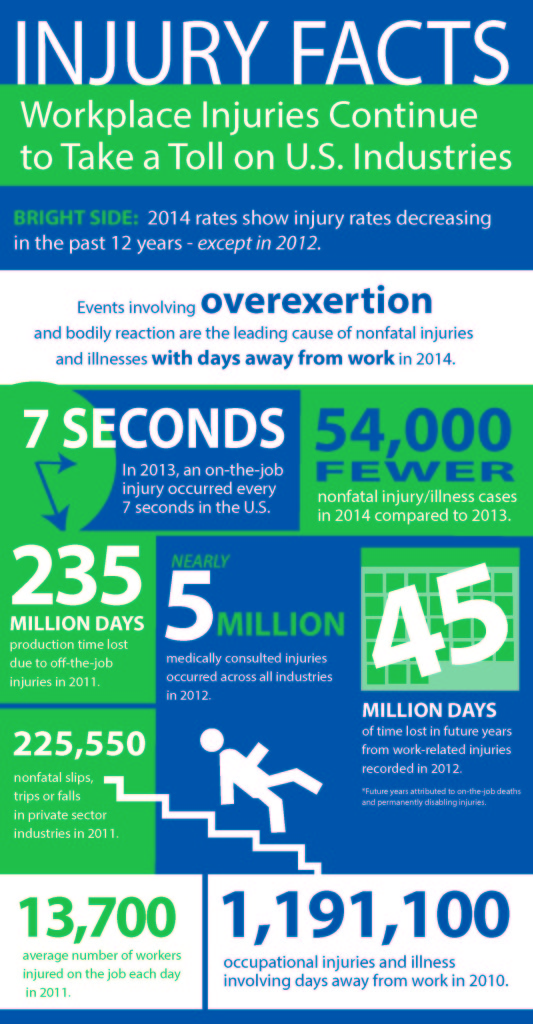Workplace Injuries Take a Toll
INJURY FACTS: Workplace Injuries Continue to Take a Toll on U.S. Industries
More than 40 years ago — before OSHA was created — an estimated 14,000 workers were killed on the job every year. Today, workplaces are much safer and healthier — going from 38 fatal injuries a day to 12 … but there is still much work to be done.
There were nearly 3 million nonfatal workplace injuries and illnesses reported by private industry employers in 2014, according to the Survey of Occupational Injuries and Illnesses conducted by the U.S. Bureau of Labor Statistics.
Additionally, each year, the National Safety Council’s Injury Facts report offers a glimpse into what’s really happening around the workplace and beyond. To learn more about purchasing the newest report, click here.
Here are a few highlights from injury reporting experts.
Use Near-Miss Reporting
5 Ways to Use Near-Miss Reporting to Promote a Culture of Safety
Ever had a close call that could have had a very bad ending? These situations happen every day in the workplace. Next time, instead of simply exhaling a sigh of relief and saying “all’s well that ends well,” take action and turn a near miss into an opportunity to make your workplace safer.
What is a Near Miss?
A “near miss” is an incident that did not result in injury, illness or damage – but could have. According to the National Safety Council, a faulty process or management system invariably is the root cause that leads to many near misses. So, any near miss in the workplace offers an opportunity for safety improvement.
Here are Gulf South Risk Services TOP 5 WAYS to use a near miss to make your workplace safer:
- FOCUS ON THE PROBLEM: Determine what led to the situation in the first place and take corrective action. For example, does a swinging door not have a window in it or is there a steep step down in the parking lot that’s not clearly marked?
- ENCOURAGE EMPLOYEE REPORTING: Many safety issues never get reported until an accident occurs. If near misses are reported, future accidents can potentially be avoided.
- CREATE A CULTURE OF SAFETY: By bringing awareness to near-miss reporting – instead of just taking corrective action after an accident or injury, you are expanding the awareness of safety and gaining essential team involvement.
- SHOW YOUR COMMITMENT: Employees are constantly rating how much a company values their efforts, and re-evaluating if a company is still a good fit for them. Showing a commitment to accident prevention is a positive method of showing your employees how much you value them.
- CREATE A NEAR-MISS REPORTING SYSTEM: A near-miss reporting system can help gather data for statistical analysis, correlation studies, trending and overall performance measurement.
Key Takeaways from OSHA and the National Safety Council Alliance:
- Incidents occur every day at the workplace that could result in a serious injury or damage.
- A near-miss program may help prevent future incidents.
- One problem that companies must overcome is employees’ fear of being blamed after reporting a near miss.
- Employers need to make the process of reporting a near miss as easy as possible.
OTHER ARTICLES
- Workplace Injuries Take a Toll
- Use Near-Miss Reporting
- Workers’ Compensation Fraud
- Workers’ Comp Tips
- Outsourcing vs. Insourcing




